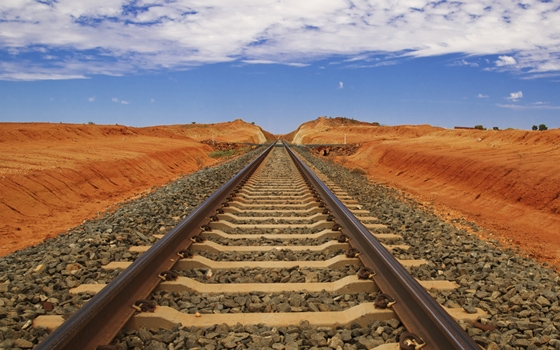Public transport in Oman has been earmarked for a major funding boost under the 2013 budget, and a planned national rail network is set to receive the lion’s share of the spend. Oman’s $15bn rail network system will provide links between domestic production and logistics hubs, while supporting efforts to open up trade links across the region.
The initiative spearheads a wave of transport projects, which includes a capital works program to expand road and aviation infrastructure and which is aimed at fast-tracking regional integration. The 2013 budget, which was outlined at the beginning of January, indicated a rise in overall outlays of 12% on the adjusted 2012 spending program, with infrastructure expenditure increasing by up to 30%.
The rail network is set to play a pivotal role in connecting the industrial production centers of Sohar, Duqm and Salalah, all sited some distance from residential areas and natural resources. Oman has an extensive land mass, and faces logistical challenges when trying to move large volumes of bulky cargo over long distances. The new train service, which is expected to include more than 1000 km of dual track when completed, will prove particularly useful in helping transport minerals.
Ahmed bin Mohammed al Futaisi, Minister of Transport and Communications, said he was confident the rail network would make a significant contribution to economic development by boosting production and employment. “The national railway is a highly ambitious project connecting Oman with other countries in the region and can trigger the national growth by leaps and bounds. We will soon float tenders for the related works of the current phase of the project,” he said in early January.
The Minister Responsible for Financial Affairs, Darwish Bin Ismail Al Balushi, told the media on January 2 that the railway initiative would be partially financed by a $10bn fund provided by fellow GCC members.
In line with plans already drawn up, the network will run from the northern border with the UAE to Salalah in the far south. Branch lines will link up with other major economic centres in the Gulf of Oman and Kuwait, and proposals have been made for the line to be extended from Salalah into Yemen.
Oman’s infrastructure and investment drive is expected to produce higher-than-anticipated GDP for 2013. The government has revised its 12-month forecast for economic growth up from the 7% predicted last year to 8.3%. The non-oil sector contribution to GDP is expected to grow by 10.6% on the back of anticipated higher levels of investment in transport and other infrastructure.
The rail network will offer opportunities for private firms across the board, including design and construction, the supply of materials, infrastructure and rolling stock, and technical services.
However, the government appears to have decided against private ownership of the network, at least in the medium term. In announcing the larger investment program, the transport minister said the state planned to set up an owning company for the network that would oversee the planning, design, tendering and construction of the rail system. Once the network is operational, the national railway company will be responsible for appointing private sector firms to run the system, including hiring, buying and leasing services.
The government is keen to fast track its rail program. However, the project has already been hit by delays following a decision in September to cancel an initial tender for design consultants over a query on submissions from the state tender board. A new tender for the $155m contract will be offered.
The country hopes to have its rail network operating by around 2018, with the design stage expected to be completed early next year and construction of the first stage due to begin by the third quarter of 2014. The government is keen to minimize delays, aware that further hiccups could impact what is a tight timetable. It will also be keeping a close eye on the Gulf-wide rail network’s progress, which the GCC hopes will be fully operational by the end of the decade.
Oxford Business Group
26 January






















































